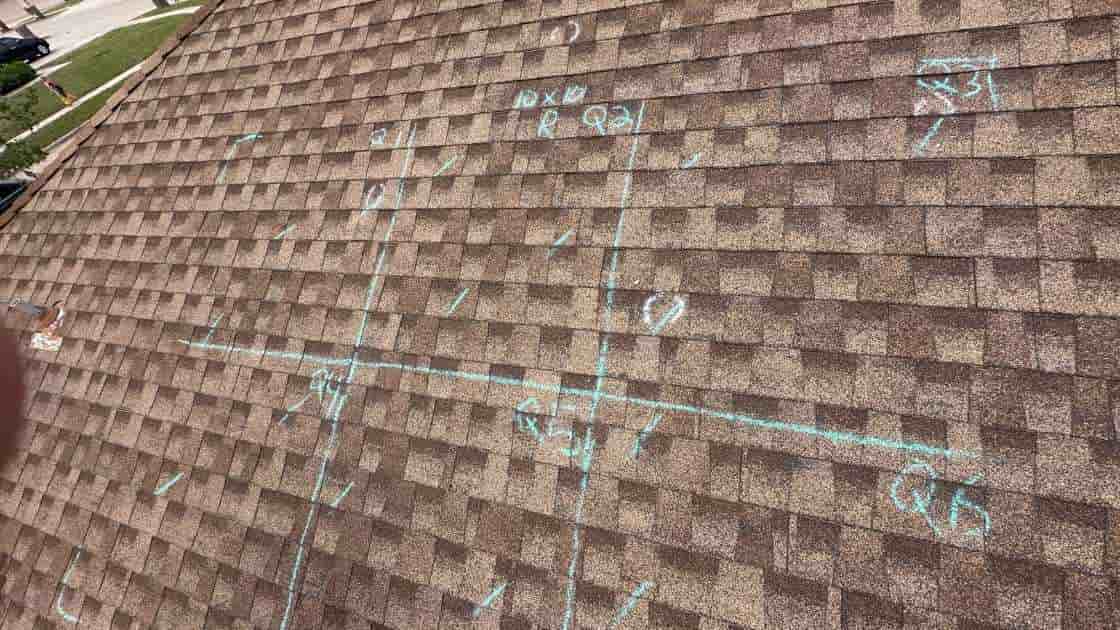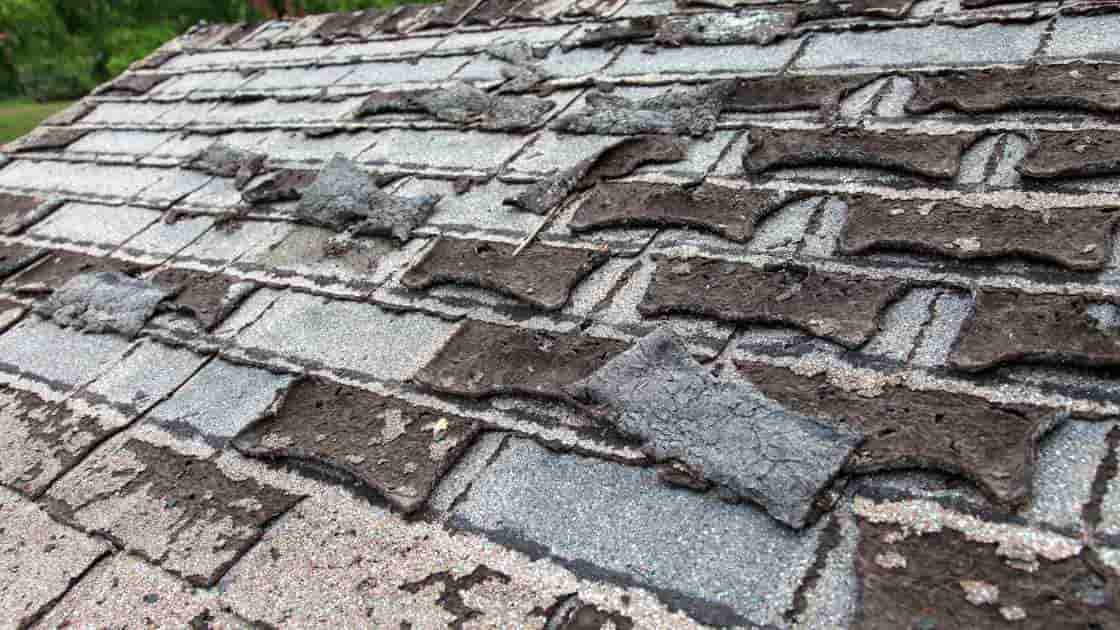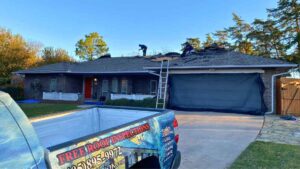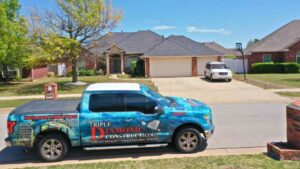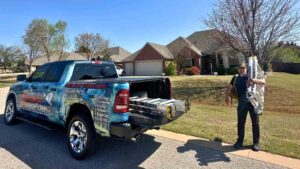As a homeowner, maintaining your roof is a top priority. However, distinguishing between hail damage and regular wear and tear can be challenging, especially if you don’t know what to look for. Was that missing shingle caused by a recent hailstorm, or is it simply due to the aging of your roof? Understanding the difference is critical—not only for keeping your roof in top condition but also for insurance purposes, since hail damage may be covered while natural aging may not be.
In this blog, we’ll break down the key differences between hail damage and regular wear and tear, discuss how to identify whether the damage is new or old and provide tips on when to get a professional roof inspection.
Why It’s Important to Know the Difference
Differentiating between hail damage and regular wear and tear is crucial for several reasons:
- Insurance Claims: Most homeowners’ insurance policies cover storm-related damage, including hail. However, they typically do not cover damage caused by normal aging or neglect. Misidentifying damage can result in denied claims and out-of-pocket expenses.
- Timely Repairs: Hail damage left unaddressed can lead to leaks, mold growth, and structural issues. Identifying it early helps prevent more serious (and costly) problems down the line.
- Roof Lifespan: Knowing whether your roof has been compromised by a recent storm or if it’s reaching the end of its natural lifespan can help you make informed decisions about repairs or replacement.
Let’s dive into how you can tell if the damage is due to a recent hailstorm or simply a result of your roof’s aging process.
Key Signs of Hail Damage
Hail damage typically results from the impact of hailstones striking the roof’s surface. This type of damage can vary depending on the size, speed, and hardness of the hailstones.
Here are some common signs of hail damage:
Dented Or Bruised Shingles
When hailstones hit asphalt shingles, they can cause bruising, which is a soft spot on the shingle that may not be visible from the ground. To test for bruising, gently press on the shingle. If it feels softer compared to the surrounding area or if it gives slightly under pressure, this is a strong indication of hail damage.
Granule Loss
Asphalt shingles are covered with tiny granules that protect them from UV rays and other elements. Hail impact can knock these granules loose, leaving bare spots on the shingles. While some granule loss is normal over time, large, localized bare spots or granules in your gutters and downspouts after a storm suggest recent hail damage.
Dented Flashing and Gutters
Unlike regular wear and tear, hail can leave visible dents in metal components such as flashing, gutters, and downspouts. These dents are often irregular and vary in size, depending on the size of the hailstones.
Cracked or Splintered Shingles
Hailstones can cause shingles to crack or splinter, especially if the shingles are already aged or brittle. These cracks may appear circular or crescent-shaped around the point of impact, unlike the linear cracks caused by thermal expansion and contraction over time.
Shattered or Dented Roof Vents and Skylights
Roof vents, chimneys, and skylights can also be damaged by hail. Look for dents or shattered glass on these components, as these are strong indicators of recent storm damage.
Signs of Regular Wear and Tear
Regular wear and tear is a natural part of a roof’s aging process. Over time, exposure to sunlight, wind, and precipitation can cause shingles and other roofing components to deteriorate.
Here’s what to look for to determine if the damage is due to normal aging:
Curling or Buckling Shingles
As shingles age, they may begin to curl or buckle. This is often a result of prolonged exposure to heat and moisture. Curling is typically uniform across multiple shingles and is not isolated to one specific area.
Granule Shedding Over Time
While granule loss can be a sign of hail damage, it can also occur naturally as shingles age. If the granule loss is evenly distributed across the roof’s surface and there are no visible impact marks, it’s more likely to be a sign of aging.
Cracked Shingles from Thermal Stress
Shingles can develop linear cracks over time due to repeated cycles of heating and cooling, which cause the shingles to expand and contract. These cracks tend to run parallel to the roof’s edge and are typically uniform in shape and size.
Algae and Moss Growth
The presence of algae or moss on your roof is often a sign of an aging roof and poor ventilation, not storm damage. These growths indicate that moisture is being trapped on the roof, which can accelerate the wear and tear process.
Worn-Out Seals Around Roof Penetrations
Seals around chimneys, vents, and skylights can deteriorate over time due to constant exposure to weather conditions. If the seals are cracked or loose, it’s likely due to aging rather than storm-related damage.
It’s important to note that most insurance policies don’t cover normal wear and tear to a roof. It’s important to understand the cause of roof damage before filing a claim.
How to Determine if the Damage is New or Old
Now that you understand the signs of hail damage and regular wear and tear, the next step is to determine if the damage is recent or if it has been there for a while. Here are a few tips:
- Check for Recent Weather Events: If you suspect hail damage, look back at recent weather reports to see if there were any hailstorms in your area. Damage that appears suddenly after a storm is more likely to be hail-related.
- Look for Missing Shingles: Recent hail damage may show fresh breaks in shingles, with clean edges and no dirt or moss buildup. If the damage is old, you may see dirt accumulation or algae growth in the cracks and around exposed areas.
- Monitor Leaks or Water Stains: If you notice new water stains or leaks inside your home, it could be a sign of recent hail damage. Older leaks may have yellow or brown discoloration, while newer leaks will appear darker and more defined.
When to Call a Professional Roofer
If you’re still unsure whether the damage on your roof is due to hail or regular wear and tear, it’s best to call a professional roofing contractor for an inspection. A certified inspector can assess the damage, provide documentation, and help you determine if an insurance claim is warranted.
At Triple Diamond Construction, we specialize in identifying hail damage and providing homeowners with reliable, professional assessments. Contact us today for a free, no-obligation inspection to ensure your home is protected from both storm damage and natural aging.
Call us at 405-895-9972 or schedule your roof inspection online!
By understanding the difference between hail damage and regular wear and tear, you’ll be better equipped to maintain your roof, avoid costly repairs, and ensure your home is protected for years to come.

